Table of Contents
Sign up for Benchmark’s free platform and send your first email in under 15 minutes.
The Ultimate
Email Marketing Guide
Email marketing can result in the highest ROI of any marketing channel. But successful email marketing is more than sending an eNewsletter to your email list every month. If you want to capture, engage, nurture, and convert your prospects, you need a full understanding of every step that goes into an effective email marketing strategy. And, you need the right email marketing service to help you pull it off.
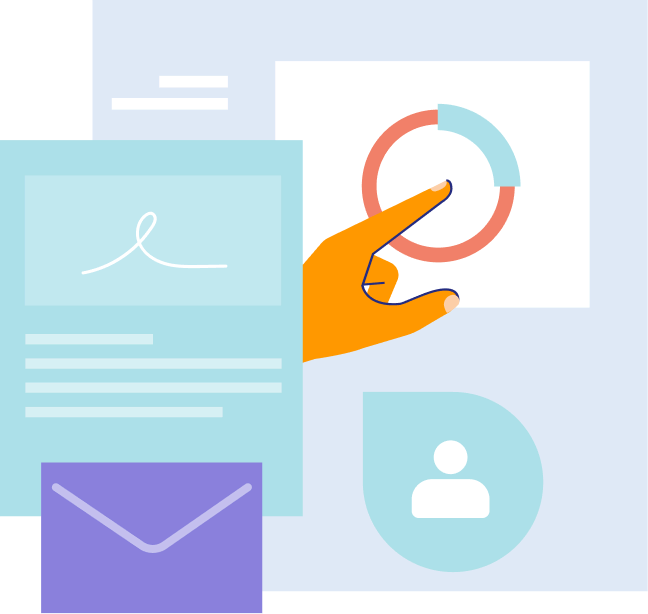
We know it can be daunting and often overwhelming, but for every dollar spent on email, you get $42 in return. With stats like that, it isn’t just cost-effective, it’s 100 percent worth what you put into it. Plus, your email list is full of people who have opted-in and want to hear from you. Having a direct line to reach your audience, using tailored email marketing campaigns is invaluable.
We’ve seen first-hand the benefits and ROI email marketing has to offer, and we know that more businesses would be using it if they found an email marketing tool that works for them and an easy, digestible way to take in tips, steps, and tactics before sending their first campaign.
If you're a marketer, marketing manager, or just wearing a marketing hat, we put this guide together with you and people like you in mind. By the time you’re done reading this, we’re confident you’ll be able to put together an email marketing strategy that:
- Captures new leads and prospects so you can take advantage of your website traffic.
- Creates more revenue by tapping into opportunities with your existing, happy customers.
- Re-engages abandon cart customers, so there are no lost opportunities.
- Gets automated feedback that leads to improved services and increased engagement and sales.
- Sends automatic nurture to your leads, generating passive income so you can focus on getting other tasks done.
Let’s Dive In!
What is Email Marketing (and Why is it So Darn Effective)?
Email marketing is a digital marketing strategy in which emails are sent consistently to an opted-in list of customers and prospects, also known as email subscribers. While it's one of the oldest forms on online marketing, it's also one of, if not the most, effective ways to turn your contacts into customers.
Since the dawn of the internet, the inbox has been a sacred space for connecting with family, friends, coworkers - and eventually businesses and brands. It began as a one-to-many approach. Businesses typically sent one message to their entire audience, whether through a monthly newsletter, promotional send or announcement. Over time, inboxes grew noisier, more crowded. And those batch & blast sends? They just didn't engage subscribers like they used to.
Fast forward to today, the digital experience has completely evolved. Even though your customers and prospects are receiving more messages than ever before, increased access to valuable customer data and insights means that you can be more engaging than ever before in the inbox
Modern email marketing is personalized, often automated, and in-tune to each subscriber's own experience with the goal of moving them through the buyer’s journey to generate loyal customers and repeat business.
What is the Buyer’s Journey?
The buyer’s journey is the process in which a buyer realizes they have a problem that needs to be solved and seeks education before making a buying decision.
What are the stages of the buyer's journey?
- Awareness: Buyer realizes they have a problem that needs to be solved.
- Consideration: Buyer performs research, brand, and product comparisons while considering which solution is best.
- Decision: Buyer selects a solution to their problem.
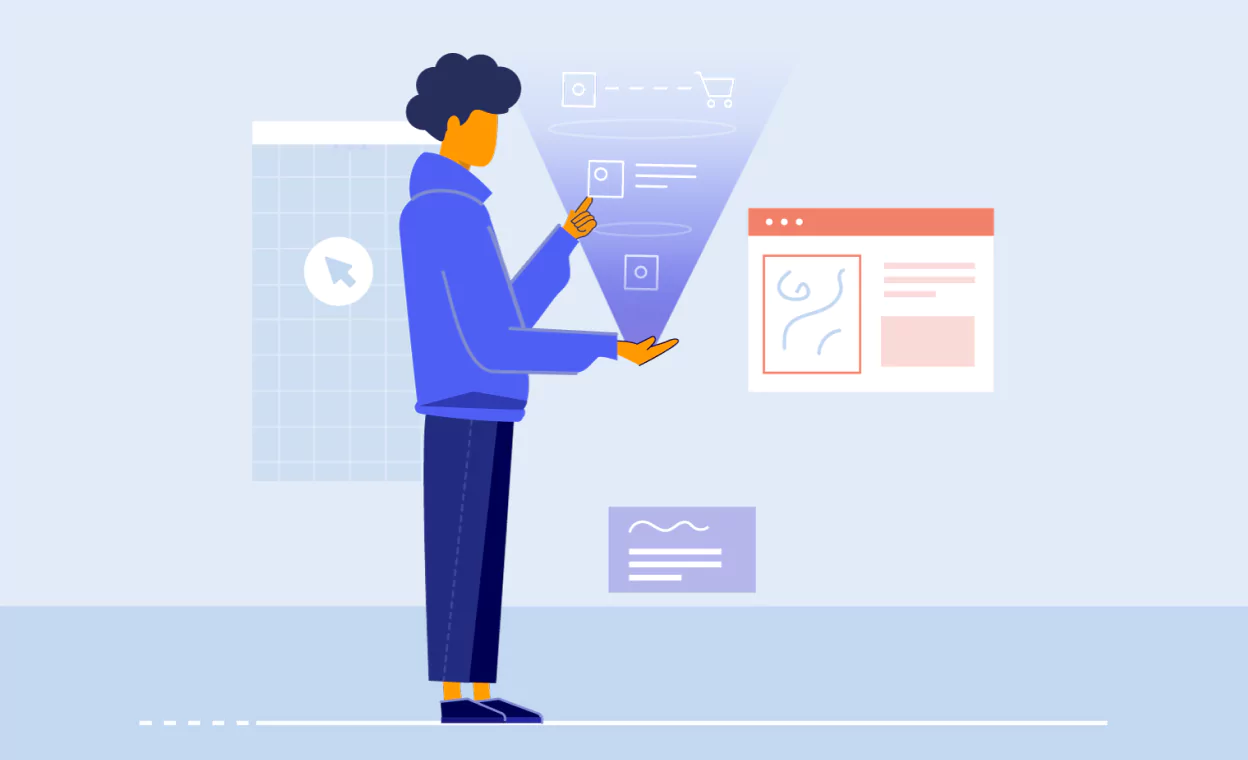
Understanding the buyer’s journey is at the core of an effective email strategy. By understanding what stage your buyers are at, you’ll be able to create personalized content that address specific needs at specific stages of the buyer's journey to launch a successful campaign. Let’s outline the steps you need to take to get your first email campaign off the ground.
How Do I Find Subscribers and Grow My Email List?
As a marketer, your list of email addresses is your most valuable marketing asset. When email subscribers opt-in to your list, they want to hear from you. So give them easy ways to sign-up.
To grow your email list, make sure you’re including email signup forms on every page of your website - the footer or sidebar of your site are great places to add a form. Share links to your subscriber form on social media to broaden your reach. Also, don't forget about capturing emails in person as well. Use a tablet - or even old-fashioned pen and paper - to capture names and emails from your storefront or live event.
Your forms must be compliant and permission-based. Make sure you include verbiage on your forms that explains what you’ll be using your user’s information for (i.e., to send them marketing materials) and that they can opt out of your email list at any time.
How Do I Get Subscribers to Fill Out My Subscriber Form?
Signup forms come in different shapes and sizes, and it never hurts to add a little honey to catch more flies. Let your subscribers know that by signing up for your list, they are going to receive great content. You can also use strategies like offering and quality resources or giving away something for free in exchange for an email address. Here are some examples of the different kinds of signup forms you can use to build your email list:
1. Embedded Subscriber Form
These are the most common types of signup forms. They’re a simple form embedded on your site, usually in the page sidebar or footer. A great subscriber form mentions the type of content you send and how often you send emails, enticing new sign-ups and reducing future unsubscribes.
2. Pop-Ups
Pop-ups are exactly as their name makes them sound. They “pop up” or appear on a webpage as a visitor scrolls down or is about to exit the page. Use pop-ups as one last attempt to capture your visitor's email address before they leave your site. Offering a discount, special content can be a great way to capture sign-ups before they leave your site.
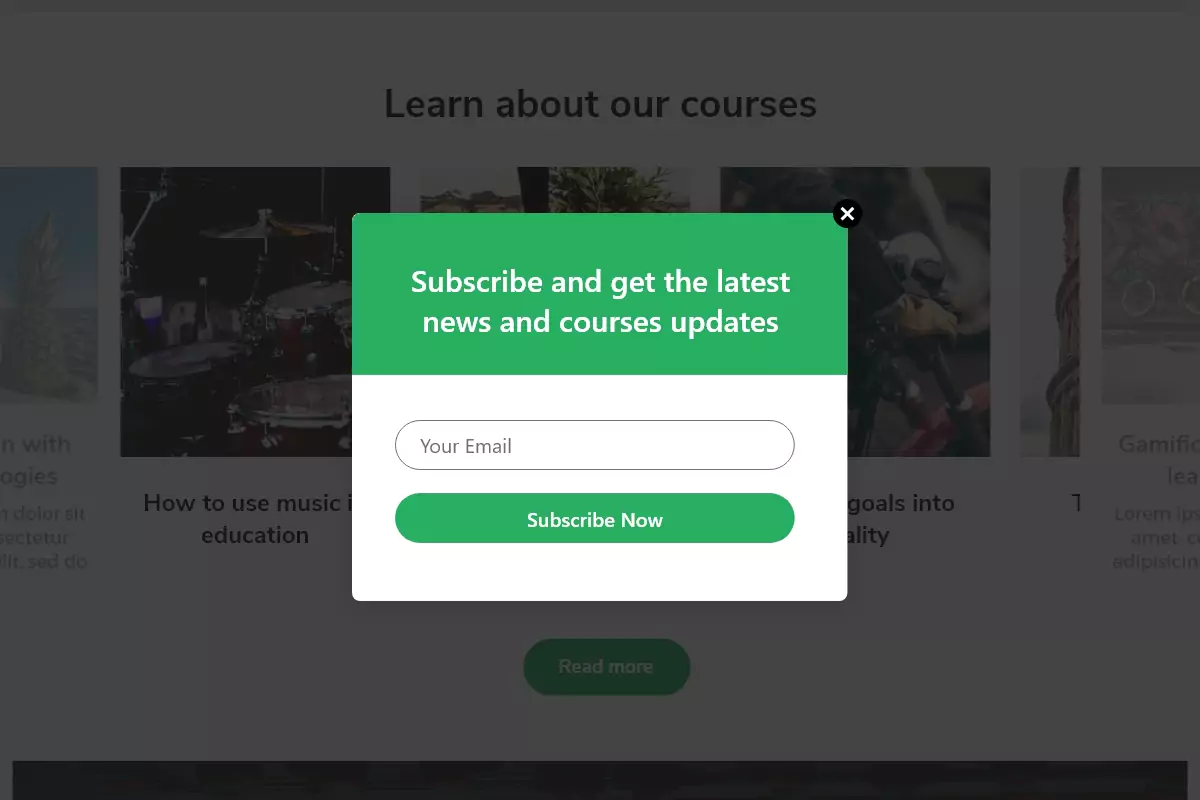
3. Lead Magnets
A lead magnet is a valuable piece of content or service, like ebooks, whitepapers, guides, checklists, reports, free consultations, or demos. Visitors can provide their information In exchange for a lead magnet. Again, obtaining permission is essential. So, we recommend including a disclaimer on these forms indicating that by filling them out, you’re permitted to enroll visitors in your campaigns and add them to your email list. You can also include a permission box for them to check.
What are Some Best Practices for Subscriber Forms?
- Voice: The tone that you use on your signup forms should match your brand. Your company has a personality that is uniquely yours, and it should shine in everything from your blog content to your signup forms.
- Incentive: The only reason someone signs up to receive your emails is because they believe they’ll get value from it. If that value isn’t apparent, then your forms will not be effective. Make sure you present the value upfront and provide enough incentive for them to fork over their information.
- CTA: A clear and straightforward call to action is a must for any signup form. Use actionable words in your signup forms, like, “Yes, I want my copy of the benchmarks report!”, “Start using beautiful templates today.”, or “Save my spot!” Creating a sense of urgency never hurts, either.
How Do I Add a Sign-Up Form to My Website?
Adding an email newsletter signup form to your website is quick and simple. In fact, with Benchmark Email, customizing, and publishing your form can take minutes. Let’s walk through how to do it.
1. Choose the Type of Signup Form.
Select the type of signup form you’d like to create. For email newsletter signups, the most common forms are pop-ups and embedded.
2. Design Your Signup Form.
Make sure your signup form design matches your company’s website branding. You don’t want to overwhelm users by asking for too much information, so we recommend asking for just a name and email address. If you really want to keep the process short and sweet, just ask for their email address, as you can always ask for more information once they’ve subscribed.
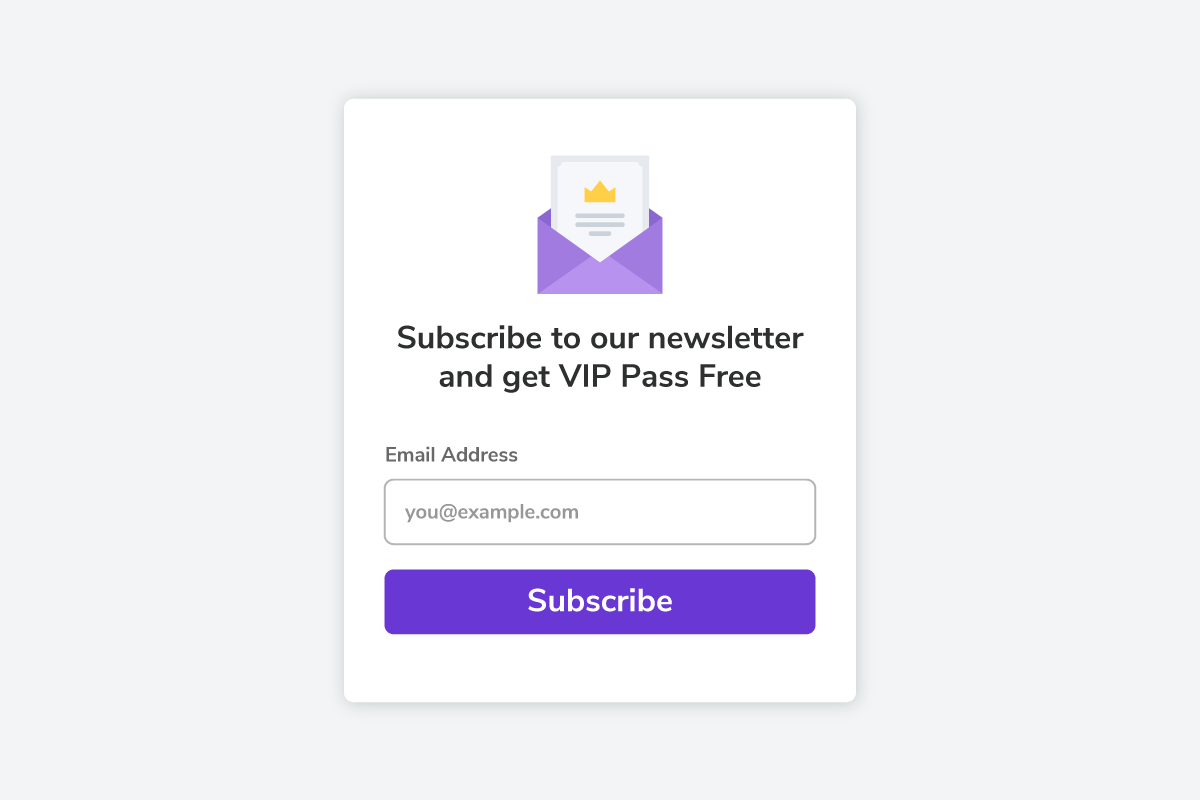
3. Set Up a Confirmation
When someone completes your signup form, you want them to feel assured that they’ve properly enrolled in your messaging. Ensure that once they opt-in to your email newsletters, they see a thank you page and receive a confirmation email. For consistency, you’ll want the email to match the look of the signup form, and make sure the thank you page is welcoming and uplifting.
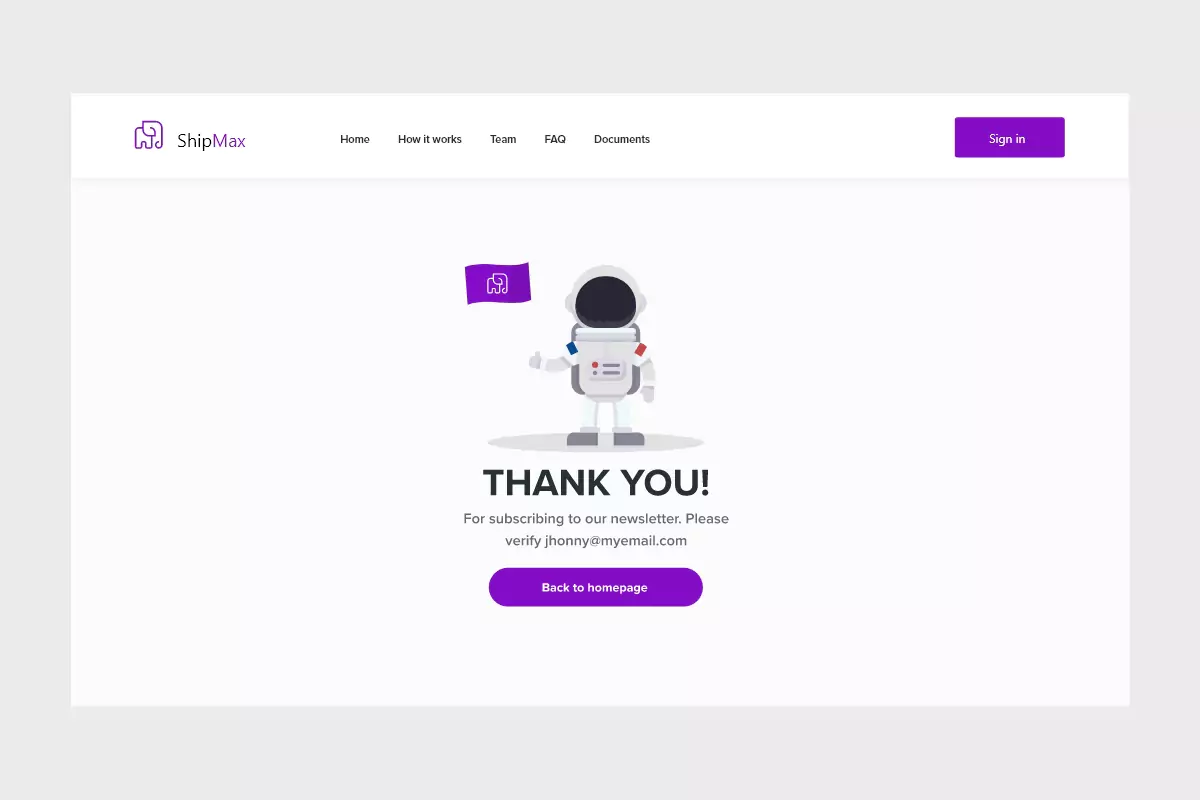
4. Publish Your Signup Form
When you complete putting together your signup form, you will be given a piece of code to place on your site.
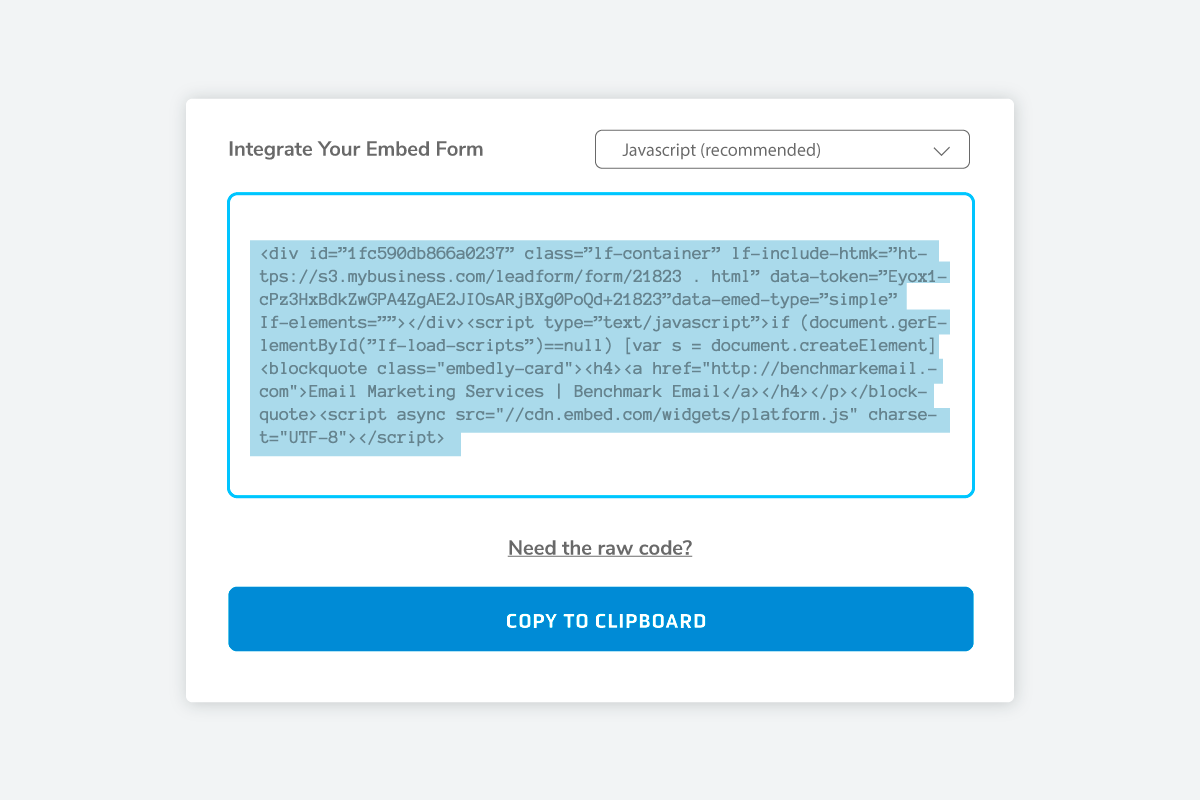
Send this code to your web developer, and he or she will know where to place it. If you are building your website yourself using a service like Wix, Squarespace, Weebly, Shopify, or BigCommerce, you can place this code into their custom HTML blocks and then place the block anywhere on your site. If you are using WordPress, we have a plugin that installs your created signup forms automatically on your site.
Where you put your signup form is important. You want to look for high-traffic places on your website, as well as consider the user experience to determine those places that make the most sense. Here are some options to consider:
- Footer
- “About” Page
- In your blog posts
- Sidebar
- Resource page
- An exit-intent pop-up
How Do I Write a Great Welcome Email for New Subscribers?
Subscribers are most engaged when they first enroll in your email list, which creates a huge window of opportunity for you. You’ll want to take advantage of that engagement period, and a welcome email is a great way to do so.
A welcome email is what you send new subscribers once they’ve signed up for your emails. It helps set the tone for your relationship, and it’s necessary for building trust so they can start to think of you as a reliable resource. Here are some compelling stats on welcome emails to give you an idea of just how crucial they are.
- On average, they generate 320% more revenue on a per email basis than regular promo emails. They see three times more transactions and revenue per email than regular promo emails.
- They experience four times the open rate and five times the click-through rate over other emails.
- The average click rate for a welcome email is 14.4 percent, whereas other emails average 2.7 percent.
- They average a 50 percent open rate.
- They’re 86 percent more effective than standard newsletters.
- Subscribers who receive a welcome email are 33 percent more engaged with a company than those who have not received a welcome email.
- Welcome emails with offers can increase revenue by 30 percent per email compared to welcome emails without an offer.
- They have an average conversion rate of 94 percent. A regular email campaign has an average conversion rate of one percent.
Don’t just wing it when it comes to putting your welcome email together. Be intentional and ensure you’re making all the right moves to start your new relationship off on the right foot. Keep your welcome email short and to the point while still adding value. Remember, for most companies, this is the email that gets opened the most and sees the highest engagement.
What Are Some Tips for Creating a Highly Effective Welcome Email?
- Automate your welcome emails. Set up an automation so that one is sent to a new subscriber the same day they fill out a form.
- Craft your email subject line with care. It’s the first thing your subscribers see and therefore plays a significant role in whether or not your email gets opened. Make it clear and catchy.
- Create a warm welcome. Make your new subscribers and customers feel right at home and consider including a special promo.
- Tell your subscribers what to do. Keep it simple and let them know the next steps they need to take.
- Deliver on your promise. If you promised to send them something on the signup form, your welcome email should contain it.
What is an Example of a Good Welcome Email?
Each company is different, and some choose to create a welcome email campaign over sending a single welcome email. We recommend keeping it simple by focusing on one email that offers a warm and helpful welcome to your new subscribers. Here’s an example of the welcome email we send to new users who signup for our free Starter Plan:
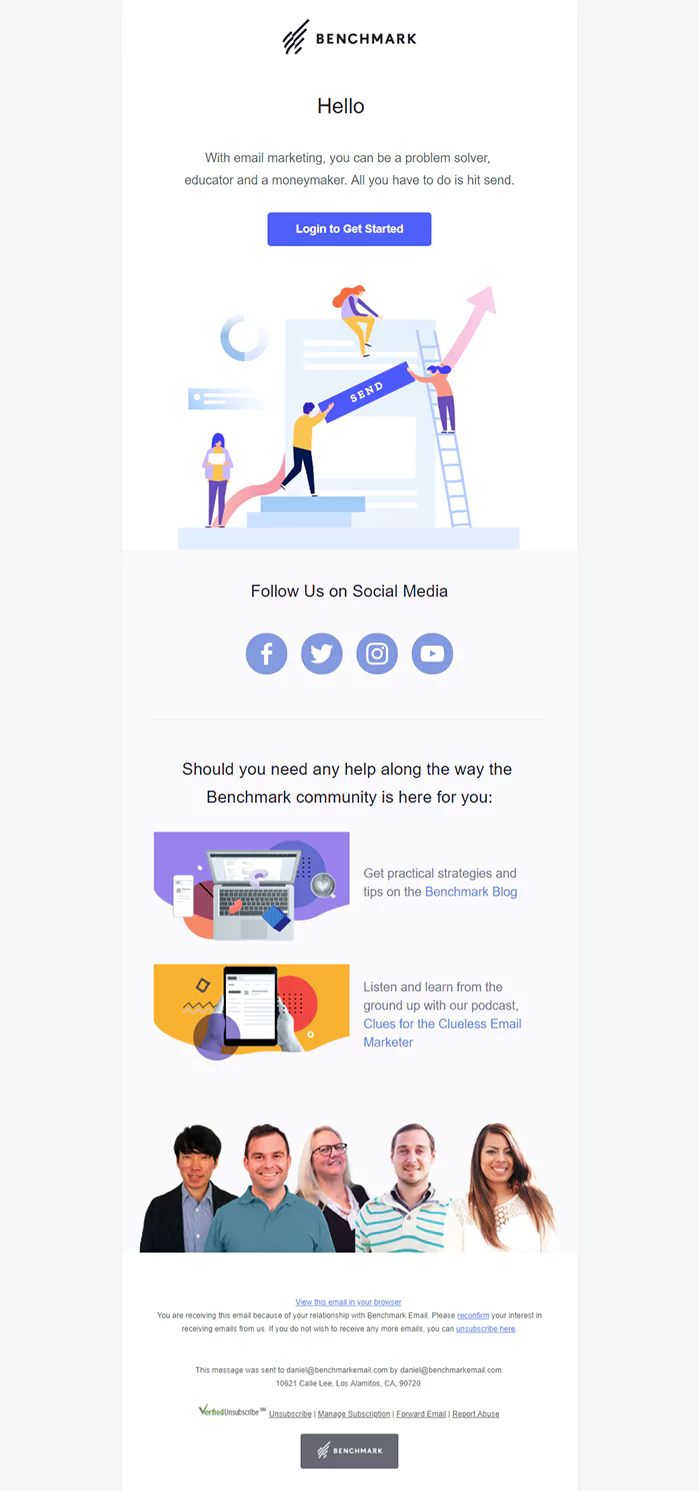
Let’s break this email down a bit:
- At Benchmark Email, we know the first thing people want to do is log in to their new account. Therefore, we put the login button at the top, so it’s the first thing they see when they open the email. What is the first thing your new subscribers will want to do? Make sure that whatever it is, it’s front and center.
- Next, you’ll notice our social media icons. We’ve seen that the more channels users follow us on, the more tips, strategies, and content they see from us. And the more helpful resources they see us push out, the more likely it is that they’ll begin to trust us and stick around.
- The last thing you’ll see in this email are links to other resources. We try to change these resources every three to six months to stay fresh and always provide updated, useful content.
How Do I Set up an Email Campaign?
Campaigns are about enrollment first and conversion later. Everything in between hinges on engagement.
If you want your new leads to eventually become customers, you have to consider what sort of email campaigns make sense to send them. This means really getting to know your prospects and the journey they’re taking with your brand.
Tap Into Your Buyer Personas
One of the first things every business should do is create buyer personas. These are detailed descriptions of each “person” you’re selling to. Your personas should include information on:
- Job title
- Industry
- Pain points
- Job expectations/functions
- Budget
- Who they report to
Tap into the personas you’ve built to understand your audience better, as well as inform the type of content you create to fuel the campaigns you’ll be building.
Examine the Buyer’s Journey
How are your leads finding your company? What are they doing once they get to your website? By digging into the journey your customers take to learn more about your brand and eventually consider it as an answer to their problems, you’ll uncover a wealth of opportunities. You’ll find areas in which you can send them the right kind of content and messaging that will move them from one stage of the buyer's journey to the next.
Awareness

Consideration
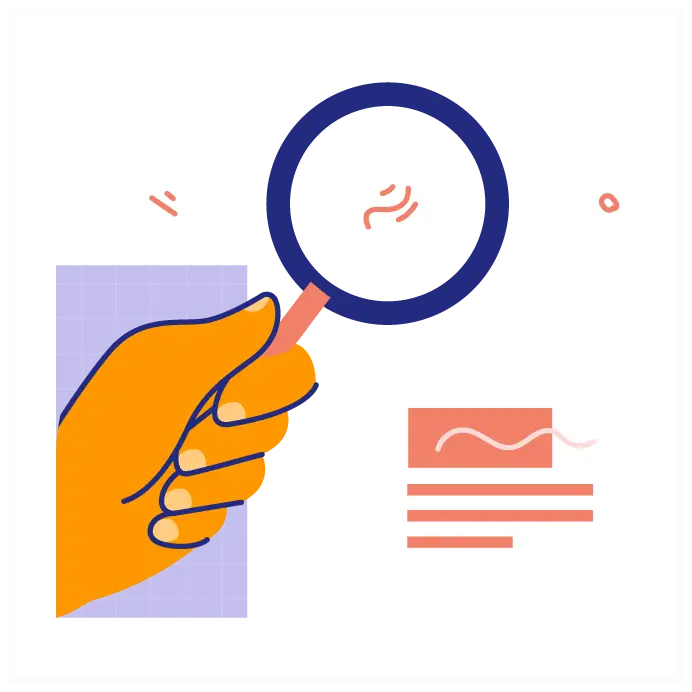
Decision
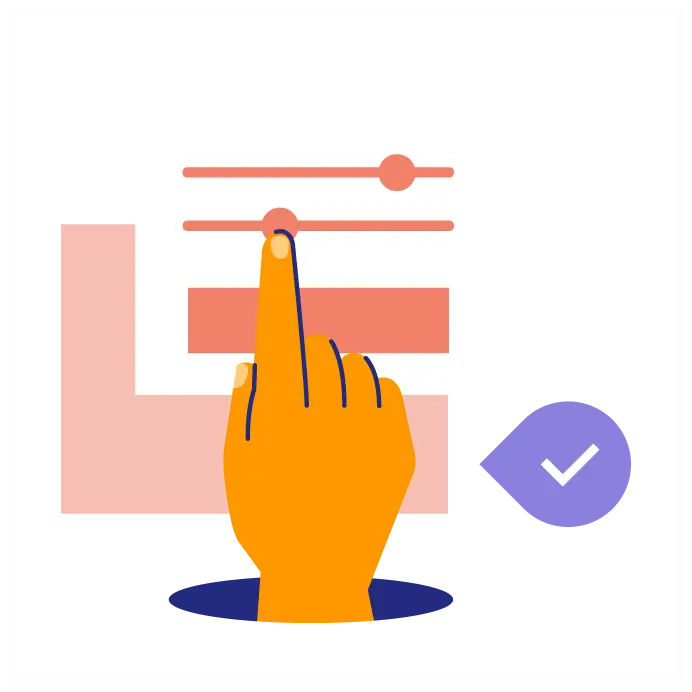
Create High-Quality Content
As we mentioned earlier, content is fuel for your emails. It’s imperative that you’re creating consistent blog content and resources like whitepapers and guides that serve a purpose for your prospects. Creating this content with the journey and buyer personas in mind will ensure its value and placement in the email campaigns you create.
Segment Your Lists
It’s never wise to send all your contacts the same emails. After all, each contact has a different level of knowledge regarding your industry, company, and service/product offering. List segmentation is crucial for sending personalized content. You’ll want to make sure you put leads that are at the same stage of the buyer’s journey on the same list so you can send them content that’s most helpful for that particular stage. It’s also smart to segment based on certain demographics, like location and industry.
Why? Well, when a lead receives information that seems like it was made just for them, it makes them feel warm and fuzzy inside. It makes them feel like you genuinely care about them, and it can lead to a more positive buying experience.
80% of consumers are more likely to make a purchase when offered a personalized experience.
How Do I Find the Right Email Marketing Tool?
We live in a world where if you aren’t sure how to do something, there’s usually a tool that can help, and an email marketing tool can be just what you need to make your strategy super effective.
When choosing the best email marketing software for your business, you'll want to make sure it fits your resources and your budget. Before doing your research, it's helpful to know how many contacts you have on your email list and how many emails you plan on sending per month. This can help you quickly figure out if a solution is within your budget since most platforms charge by how many contacts you upload to their system, or by how many emails you send per month.
Knowing what features you require (and which ones you don't!) can also help you narrow down a platform that suits your needs. You don't want to pay for features you'll never use. Some email marketing platforms can have a pretty wide feature set that goes beyond email marketing that you may already be covering with other platforms - for instance online ads or a website builder.
Finally, most solutions offer a free email marketing account or a free trial so you can take a test drive before you commit.
How to Build Email Campaigns
Nurture campaigns, or “drip campaigns,” as they’re also referred to, are a series of emails you send your prospects that provide them with personalized information. You’ll want to map these campaigns out as an email marketing funnel using the knowledge you gained from examining your audience personas and the buyer’s journey, as well as include the high-quality content you created.
1. Create Your Email Lists
Create your email lists based on how you want to segment your leads. Segmentation can be by region, industry, type of business, or job title. Make sure to also cross-segment based on where they are in the buyer’s journey.
2. Create a Campaign for Each Email List
Look at each list and start putting together a series of emails you’ll send to each one. For example, if one of your lists is filled with small business leads who are at the awareness stage of their journey, then send them more entry-level content that explains the fundamentals of your industry and what your company does. Make sure to also send them guides or long-form content that is explicitly geared towards small businesses. Use your content to help your leads travel through your email marketing funnel.
Space each email out so that you aren’t sending them too frequently or too infrequently. You want to stay top of mind without harassing them or inundating them with too many emails. We recommend sending an email every week or so.
3. Measure Results
Keep track of how well your emails are performing. This helps you determine whether or not your emails are resonating with your audience, and can help you get better results over time. Look at engagement metrics like bounce rate, and click-through rate to determine if your emails are doing what you intended them to do.
4. Update When Necessary
Businesses evolve. Sometimes your target audience shifts; you update content or create new content that is more useful. Make sure you designate time to give your drip campaigns a facelift, so they continue to be useful.
How Do I Re-engage Lost Customers?
You should never give up on your customers. Just because someone abandons cart doesn’t mean they won’t eventually purchase. Enter the ever-successful cart abandonment email.
28.3% of all eCommerce revenue comes from successful abandoned cart emails.
You can automate your abandon cart emails so you’re closing sales that would have otherwise been lost without spending any more of your valuable time. Isn’t email automation great?
Cart Abandonment: Why?
Second to automated welcome emails, abandon cart emails are one of the most common email automations. But if you’re going to put together effective abandon cart emails, you have to understand customers’ reasoning for abandoning in the first place.
Top three reasons people abandon cart:
- Unexpected costs from shipping and taxes
- Lower prices elsewhere
- Confusing or long shopping cart process
Based on this information, you can create and test cart abandonment strategies to see which best addresses and combats reasons for abandonment.
How to Set Up Cart Abandonment Emails
If you have an eCommerce or online store, such as Shopify, WooCommerce, BigCommerce, etc., you can easily integrate with Benchmark Email to create a cart abandonment email within minutes.
If you don’t have an eCommerce-specific or online store, you can use Benchmark Email's Automation Pro marketing automation feature to achieve a cart abandonment strategy on your website.
Cart Abandonment Email Tips
- Make compelling offers. Offering free shipping, discounts, and bundles is the best way to attract visitors back to your store. Remember, the second reason visitors abandon an online shopping cart is because of unexpected costs or because they’ve found a better price with a competitor. Test different offers and see what works best at bringing customers back.
- Time it just right. If you wait too long to reach out, you could lose the business. If you send too soon, you might not allow for a completed purchase, and you’ll eat away at your profits. We suggest sending within a few hours of the cart abandonment, no more than 24 hours, though. But don’t hesitate to test different delay times and see what’s successful.
- Use with other strategies. Abandonment emails can be used with other tactics that aren’t related to retail. With website tracking, you can trigger emails to be sent based on users visiting any URL from your website.
Use this strategy to get visitors back under different circumstances, such as:
- An abandoned webinar or event signup
- Leaving a specific page on your website
- Exiting your site without visiting a specific page or taking action (like your pricing page or setting up a demo)
How Do I Get Customer Feedback?
The experience your customers have not only with your website but with your actual company matters.
86% of buyers will pay more for a better customer experience.
Implementing customer-centric tactics will lead to more value for your subscribers. So, if you’re going to delight your customers at every stage of their journey, it’s crucial that you know what they think about their experience with your brand.
After all, increasing customer retention by just 5% can increase profits between 25% and 95%.
Serving the needs of your customers serves your business. This is why asking them for feedback is a great way to provide them with increased service in the future. Let them tell you what they want!
Surveys and polls are built into email features to help you get valuable feedback from your customers and subscribers. You can then use those customer surveys to inform your marketing strategy and how you personalize your emails, your sales approaches, and how your team provides customer service in the future.
Here are Six Advantages to Getting Customer Feedback From Surveys or Polls:
- They start a conversation. Create engagement with your subscribers and find out what they want.
- They’re fast and easy. It's very simple to create and send a survey. They can also be fun!
- They yield innovative ideas. Your customers are one of your most valuable creative resources. Their input can help you brainstorm better, more efficient tactics and processes.
- They alleviate pressure. Surveys and polls don’t put customers on the spot the same way a phone call might.
- They gauge satisfaction. Are you doing a good enough job for your customers and subscribers? No more guessing because they’ll let you know if they’re satisfied or not.
- They provide immediate results. The reporting data from your surveys and polls are available in real-time, letting you track the results right away.
How To Get Valuable Feedback From Your Customers and Subscribers
Getting proper customer feedback and acting on it can mean the difference between a successful and unsuccessful company. We recommend a two-step strategy to request feedback from customers properly:
1. Getting Your Customers’ Overall Satisfaction Rating.
As soon as a customer closes, purchases something from you, or has a support ticket solved, request their overall experience rating. Doing so quickly will ensure they leave the most accurate review while the experience is fresh.
Also, send a product or service review survey after they’ve received their product or worked with your services. Make sure you leave enough time for them to experience the product or service, and if shipping is involved, wait long enough for the product to arrive and for the customer to try it.
In your surveys, get straight to the point. From the subject line to the email copy, don’t try to dance around anything. If you add too much to these emails, your subscriber will zone out and put it off till later (and we all know that later never comes).
Here are some examples of great survey email subject lines:
- Tell us about your experience with [a recently purchased product or service].
- [First Name], what do you think about [a recently purchased product or service]?
- We need your feedback! Help us create a better experience for you.
Still need some help with your subject lines? Use our free Email Subject Line Generator.
For your initial feedback request emails, don’t complicate things. Ask for a simple good or bad service rating. You can do this by simply adding two images with links attached to them. One of the images being a thumbs up and the other a thumbs down. You can have your customer service team reach out to those who clicked on the thumbs down image and request a public review from those who clicked on the thumbs up. Set this up once and automate it for all future customers.
Here’s an example of the feedback request email we send customers:
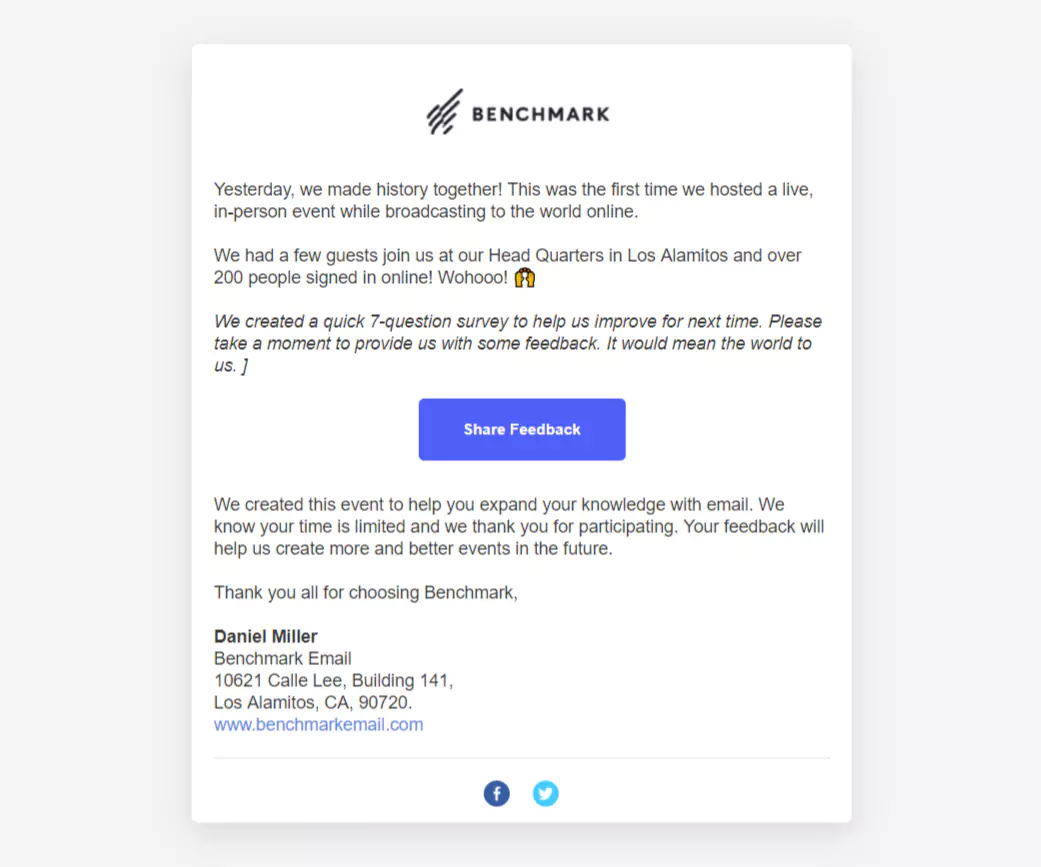
2. Requesting the Review.
Online word of mouth has a massive influence on a person’s purchasing decision. Nine out of ten consumers read online reviews before making a buying decision.
When requesting a review, again, keep your email and subject line simple and to the point. The more direct and easy you make the process, the more likely your subscriber will play along. It’s best practice to ask for public reviews on third-party sites, like G2, Software Advice, or GetApp. You should also include reviews on your website, but review sites have more authority to potential buyers and generate a lot of traffic from consumers looking for unbiased input.
Here’s an example of the review request email we send our customers:

How Do I Retain Customers?
It’s commonplace for companies to focus on refining and perfecting their sales processes. Getting new leads to feed the inbound funnel is crucial for the overall success of a company. But a lot of businesses don’t understand that in doing so, customer retention tactics can sometimes play second fiddle.
It costs five times more to attract a new customer than to sell to existing ones. So while your sales strategy is obviously important and necessary, so is having a long-term email marketing plan that focuses on customer retention.
This makes sense, right? If someone used your company or product before, then you shouldn’t have to work so hard to dazzle them into using you again. But that doesn’t mean it’s all smooth sailing. You need a solid plan in place so you can maximize your time and resources.
Create Repeat Business
Creating great emails that keep your customers in the purchase cycle and have them coming back for more time and again will benefit your business for the long haul. These types of long-term campaigns must also be factored into your email marketing plan.
Here are some ideas on keeping your subscribers, customers, and leads engaged long term:
- Set up inactivity triggers. Set alerts for subscribers who stop opening your emails and attempt a re-engagement strategy. Get their feedback on why they aren’t opening your emails anymore.
- Identify customers who haven’t visited your store in a while. Send them a special email based on previous purchases or specials.
- Tap into recurring customers. Keep in mind that these subscribers are most likely sharing your emails and talking about their experience with your business with others. Engage them as often as possible, but don’t overdo it. Test your limits with how often you can send and remember to always be providing value.
- Properly segment and organize your lists. As we touched on earlier, having organized and properly segmented lists allow you to send the right email to the right person at the perfect time. This will result in higher email engagement, happier customers, and increase sales. Try segmenting customers by product categories, the amount spent, and the number of purchases.
How Do I Measure Success?
One of the most significant contributors to successful email marketing is implementing proper upkeep to your emails and lists. For instance, if you are unknowingly sending messages to invalid email addresses, you could negatively impact your deliverability, risking whether or not your future emails even make it to inboxes.
We recommend routinely scrubbing your lists to make sure you’re sending emails to valid, engaged addresses.
Keeping an eye on your email marketing metrics will help you notice any patterns in performance and can help you uncover any addresses that should potentially be removed due to inactivity or invalidity.
Here are some email marketing metrics to measure:
- Open rate
- Click-through rate and conversion rate
- Bounce rate
- Mobile open rate
- Spam score
- Unsubscribes
If you’re noticing any negative patterns, like your open rate is decreasing, try A/B testing. This allows you to test different subject lines with your lists and compare results to see which subject line was more successful. You can also do this with CTA language to determine what approach results in the most clicks.
Don’t Forget These Tips
We covered a lot of ground, and we hope that you’ll refer to this guide time and time again when emailing or when looking for tips that will improve your efforts. Let’s refresh on some of the most essential tips you should come away with.
- Identify your core customer. This helps you know what touchpoints you should focus on for growing your list and the types of email campaigns you should send.
- Segment your lists. This will allow you to send targeted, personalized, and more relevant emails to everyone subscribed.
- Define your goals. This answers why you’re creating and sending every email and provides you with benchmarks to check against.
- Create an email sending schedule. This helps you plot out when to send your holiday campaigns, incorporate special sales and event promos, your drip campaigns, and any other types of emails you can send to achieve your goals. Make sure your subscriber hears from you at least once a month!
- Leave room to improve. Using your reporting data, you’ll be able to see what is working and where you can get more of an impact from your emails.
- Implement A/B testing. Test various subject lines and CTA language to see which approaches work best.
- Try email templates. The best email marketing software comes with some creative and appealing templates that you can use to make email creation a cinch. Make sure you use the right email service for your business - one that provides you with some email template options so you can choose one that fits your needs and your brand. When in doubt, check out email marketing campaign templates from other brands to see what they're doing.
Congratulations, you did it!
By following these steps, you're well on your way to become an email marketing expert. Remember, the most important step comes before you send your first email campaign, and that's selecting the best email marketing software to fit your different needs and goals. It's the most effective way to send the type of campaigns necessary to move your leads through the funnel and grow your email list.
If you think you're ready to take an even deeper dive into email marketing for your business, check out our free downloadable resources here or sign up for our free plan today. Happy sending!



